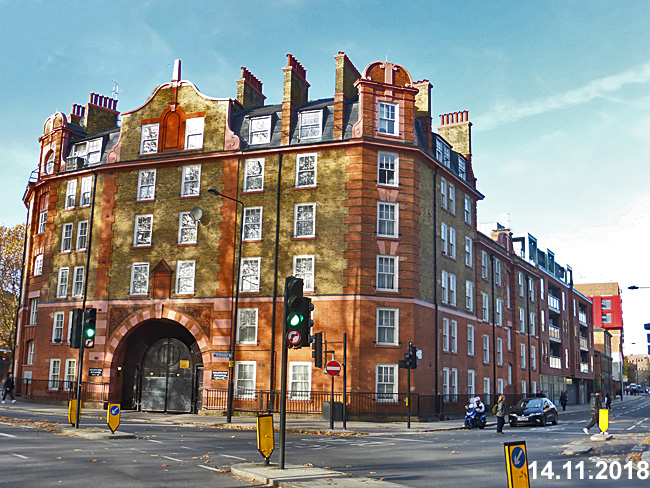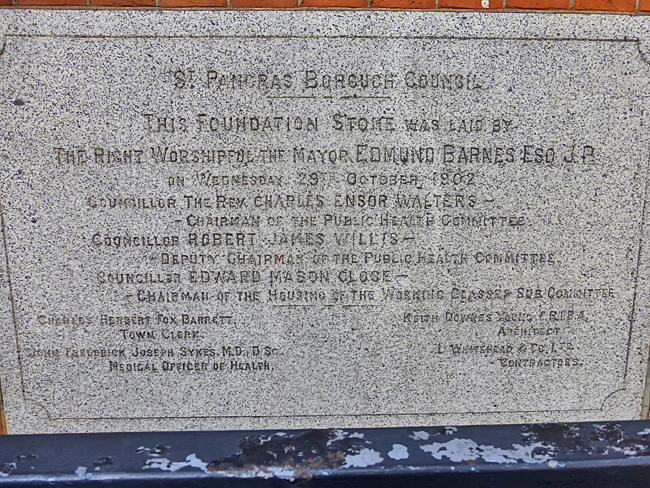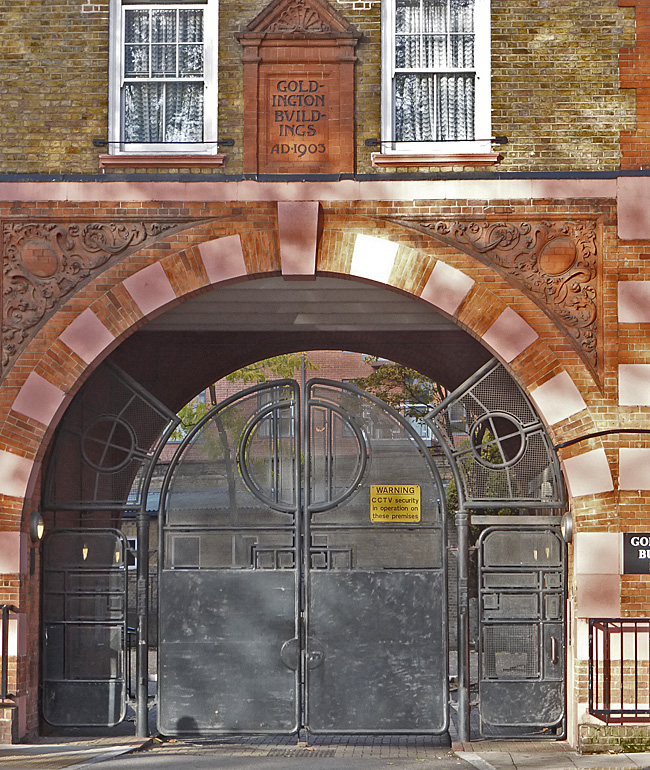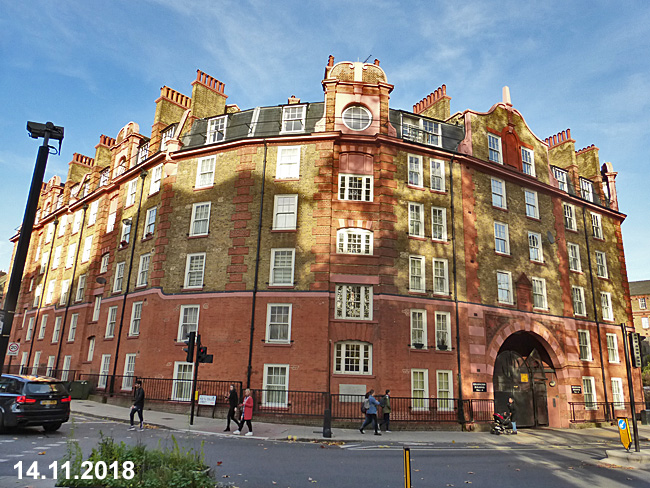Goldington Buildings, Camden, London

Architect
|
Keith Davies Young
|
Date
Built
|
1903
|
Location
|
Pancras Road
|
Description
|
The foundation stone of
Goldington Buildings was laid in October
of 1902 by Edmund Barnes, Mayor of St
Pancras Borough Council. The stone
appears to indicate that the architect was
Keith Davies Young.

The plaque above the entrance indicates that
it was completed in 1903. The municipaldreams.wordpress.com
site explains that, "... The Goldington
Buildings were built between 1902 and
1904. Externally, the building had –
and retains – a certain grandeur with its
red- and yellow-stock brick, corner
quoins, terra-cotta detailing, decorative
gables and mansard roof. The opening
programme boasted of its ‘large courtyard’
and ‘covered playing place for children’.
Internally, it was far better
accommodation than that which it replaced
but it was basic – comprising 56
dwellings, mostly three-room tenements
containing WCs, sculleries and coppers for
hot water but no baths. "

The foundation stone indicates that one of the
people present at the laying was Councillor
Edward Mason Close, whose role was "Chairman
of the Housing for the Working Class Sub
Committee". However as the
municipaldreams website explains Goldington
Buildings, "... rents were too high for
most of the displaced slum-dwellers.
Cheaper two-room flats let more readily
but the three-room (at between 9s 6d and
11s 6d a week) were affordable only to the
better-off. Indeed one of the
earliest residents, William Neave, was a
commercial traveller and his daughter a
short-hand typist…until she became better
known (and renamed) as Ethel le Neve, Dr
Crippen’s mistress. Since then
Goldington Court (also renamed) has been
modernised several times over to suit
higher standards and changing times.
Most of the flats, but not all, had baths
by 1935. A major 1964 refurbishment
replaced that now ‘dreary asphalt
courtyard’ with a garden and increased the
number of one-bed flats. Now managed by
Origin Housing, the most recent (£3.9m)
renovation in 2011 increased the number of
larger family-size flats: 21 of the 30
current flats are three-bedroom."

|
Close
Window
|

